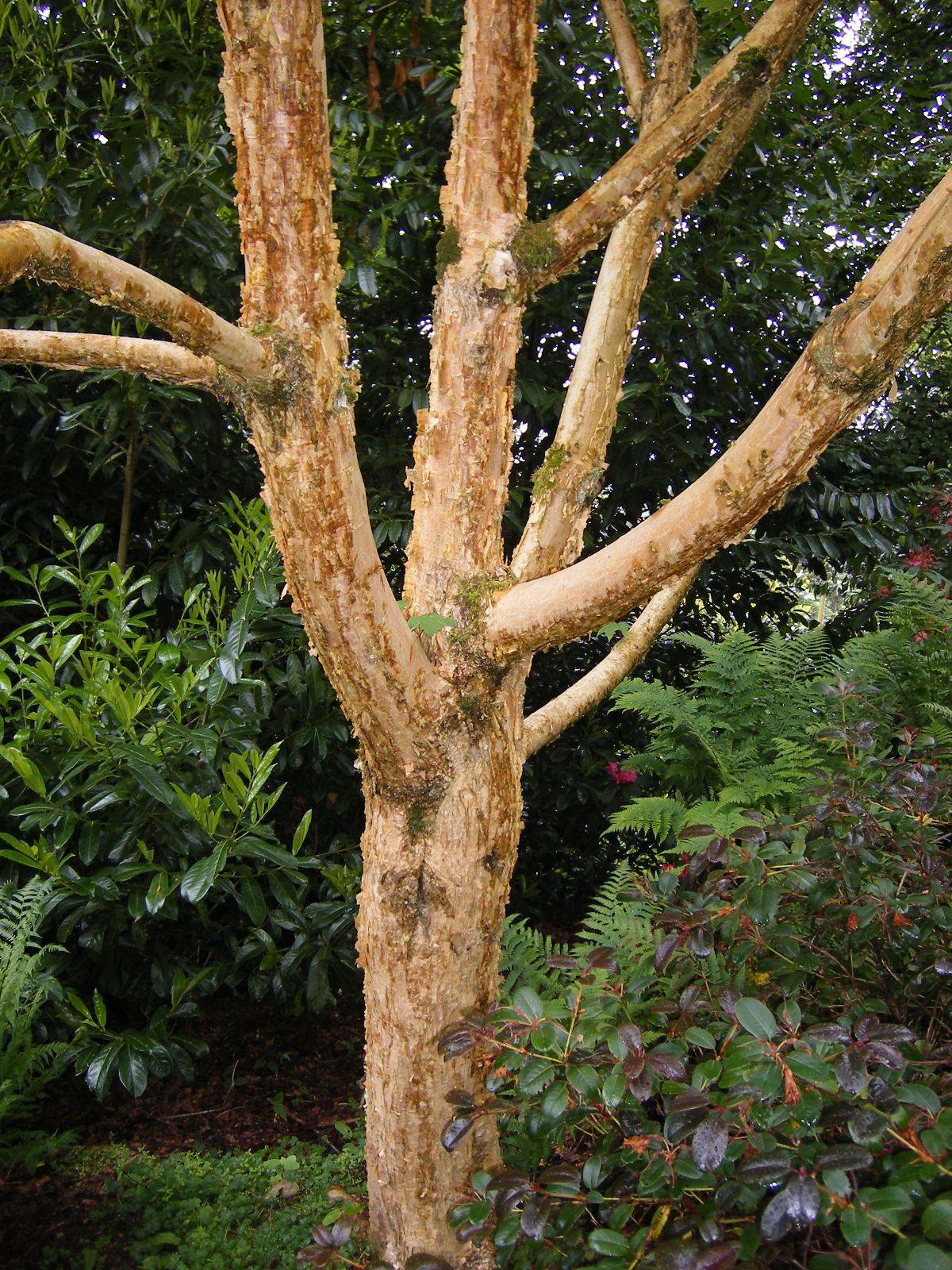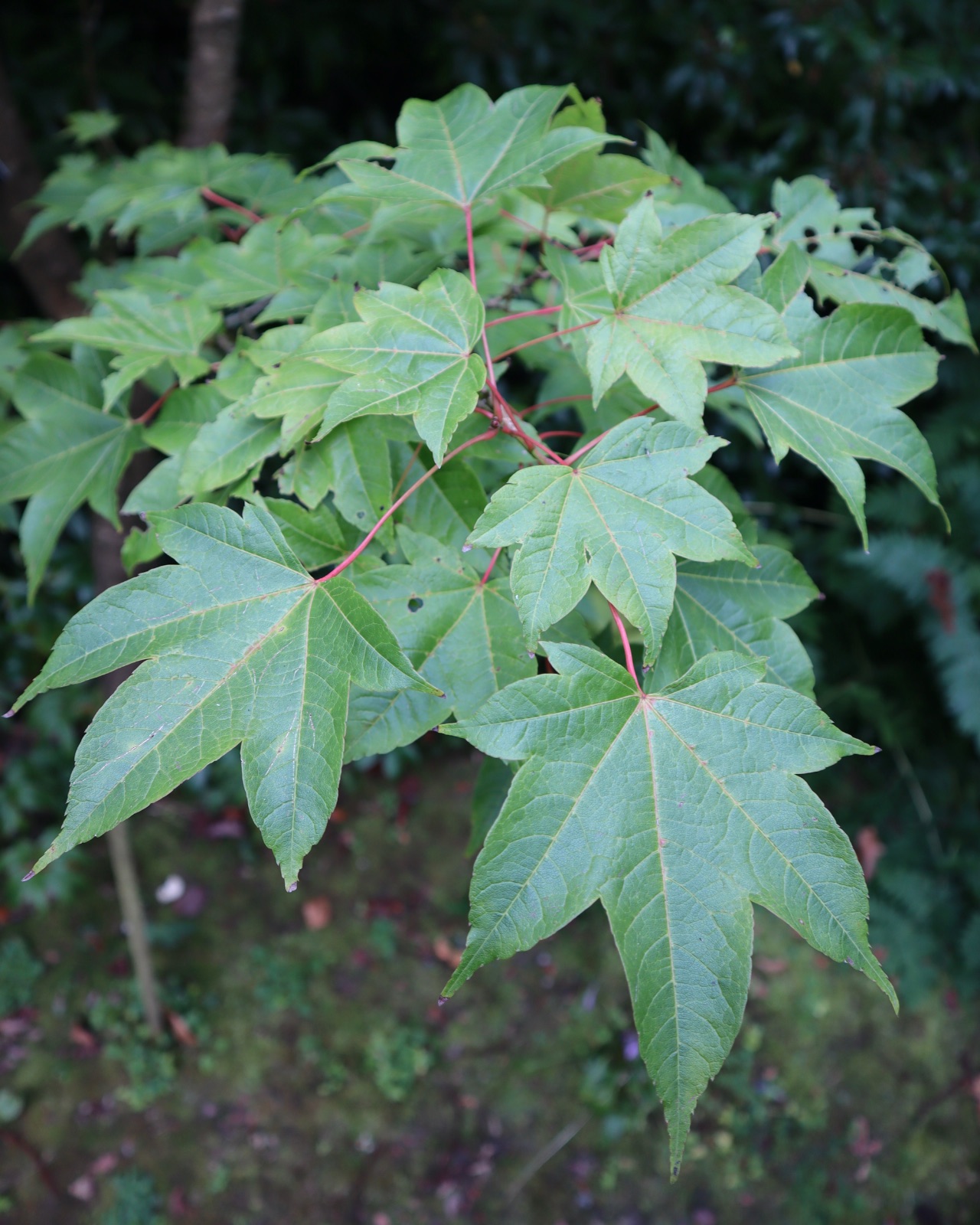Acer caudatum
Sponsor
Kindly sponsored by
a member of the International Dendrology Society
Credits
Dan Crowley (2021)
Recommended citation
Crowley, D. (2021), 'Acer caudatum' from the website Trees and Shrubs Online (treesandshrubsonline.
Genus
Synonyms
- Acer acuminatum Dippel
- Acer caudatum var. multiserratum (Maximowicz) Rehder
- Acer caudatum subsp. georgei (Diels) A. E. Murray
- Acer multiserratum Maximowicz
- Acer papilio King
Other taxa in genus
- Acer acuminatum
- Acer amplum
- Acer argutum
- Acer barbinerve
- Acer buergerianum
- Acer caesium
- Acer calcaratum
- Acer campbellii
- Acer campestre
- Acer 'Candy Stripe'
- Acer capillipes
- Acer cappadocicum
- Acer carpinifolium
- Acer 'Cascade'
- Acer ceriferum
- Acer chapaense
- Acer chienii
- Acer circinatum
- Acer cissifolium
- Acer × conspicuum
- Acer cordatum
- Acer coriaceifolium
- Acer × coriaceum
- Acer crataegifolium
- Acer davidii
- Acer diabolicum
- Acer distylum
- Acer divergens
- Acer duplicatoserratum
- Acer elegantulum
- Acer erianthum
- Acer 'Esk Flamingo'
- Acer fargesii
- Acer fenzelianum
- Acer flabellatum
- Acer forrestii
- Acer franchetii
- Acer × freemanii
- Acer fulvescens
- Acer 'Gimborn'
- Acer ginnala
- Acer glabrum
- Acer 'Gold Coin'
- Acer granatense
- Acer grandidentatum
- Acer griseum
- Acer heldreichii
- Acer henryi
- Acer × hillieri
- Acer hookeri
- Acer hyrcanum
- Acer japonicum
- Acer kawakamii
- Acer komarovii
- Acer laevigatum
- Acer laurinum
- Acer laxiflorum
- Acer lobelii
- Acer longipes
- Acer macrophyllum
- Acer mandshuricum
- Acer maximowiczianum
- Acer maximowiczii
- Acer metcalfii
- Acer miaotaiense
- Acer micranthum
- Acer 'Mindavi'
- Acer 'Minorient'
- Acer miyabei
- Acer miyabei × campestre
- Acer monspessulanum
- Acer morifolium
- Acer 'Mozart'
- Acer oblongum
- Acer obtusifolium
- Acer okamotoanum
- Acer oliverianum
- Acer opalus
- Acer orientale
- Acer palmatum
- Acer papilio
- Acer pauciflorum
- Acer pectinatum
- Acer pensylvanicum
- Acer pentaphyllum
- Acer pentapotamicum
- Acer pictum
- Acer pilosum
- Acer pinnatinervium
- Acer platanoides
- Acer platanoides × amplum
- Acer platanoides × truncatum
- Acer × pseudoheldreichii
- Acer pseudoplatanus
- Acer pseudosieboldianum
- Acer pubinerve
- Acer pycnanthum
- Acer rubescens
- Acer rubrum
- Acer rufinerve
- Acer saccharinum
- Acer saccharum
- Acer sempervirens
- Acer 'Serpentine'
- Acer serrulatum
- Acer shenkanense
- Acer sieboldianum
- Acer sikkimense
- Acer 'Silver Cardinal'
- Acer 'Silver Ghost'
- Acer sinense
- Acer sinopurpurascens
- Acer spicatum
- Acer stachyophyllum
- Acer taronense
- Acer tataricum
- Acer tegmentosum
- Acer tenellum
- Acer tetramerum
- Acer tibetense
- Acer tonkinense
- Acer triflorum
- Acer truncatum
- Acer tschonoskii
- Acer turkestanicum
- Acer tutcheri
- Acer ukurunduense
- Acer velutinum
- Acer wardii
- Acer 'White Tigress'
- Acer wilsonii
- Acer × zoeschense
A deciduous tree to 10 m. Bark grey to brown, finely ridged, soon becoming flaky. Branchlets stout, dark reddish to green, pubescent at first, lenticillate, turning greyish brown. Buds ovoid, with two to three pairs of valvate scales, outer scales ovate. Leaves broadly ovate in outline, base deeply cordate to cordate, five (-seven) lobed, 8–12 × 8–12 cm, lobes triangular ovate, apically acuminate to caudate, margins doubly and sharply serrate with acuminate teeth, upper surface matt, light to mid green, primary veins raised, secondary veins lightly impressed, pubescent along veins at least at first, lower surface pale to whitish green, pubescent throughout with short, yellowish hairs; petiole 5–9 (–20) cm long, reddish or green, glabrous or pubescent, often slightly grooved, broadest at base; autumn colours usually yellow. Inflorescence terminal, erect, racemose-paniculate, pubescent, many flowered. Flowers 5-merous, peduncles 8–10 cm, pedicels 0.5–0.8 cm, slender, slightly pubescent, sepals ~0.3 cm, ovate to lanceolate, petals yellowish white, ~ 0.7 cm, narrowly oblong, stamens eight, inserted in the middle or on the outside of the nectar disc. Samaras 2.5 to 2.8 cm long, wings spreading acutely or erectly. Nutlets ovoid to subglobose. Flowering in May, after the leaves have emerged, fruiting September to October. (van Gelderen et al. 1994; Rushforth 1999; Xu et al. 2008).
Distribution Bhutan Myanmar China Southeastern Gansu, western Henan, western Hubei, Ningxia, southern Shaanxi, western Sichuan, southeastern Xizang, northwestern Yunnan India North Nepal
Habitat Alpine forests, between 1700 and 4000 m asl.
USDA Hardiness Zone 4
RHS Hardiness Rating H5
Conservation status Least concern (LC)
see A. papilio
From the Supplement (Vol. V)
The name A. caudatum, rejected as ambiguous in the note under A. papilio on page 220, is upheld by Dr Hiroshi Hara in Journ. Jap. Bot., Vol. 50, p. 268 (1975). While it is the case that there is no specimen of A. caudatum in the sense of A. papilio among the Wallich specimens under his No. 1225 in the Wallich Herbarium at Kew, there is one in the British Museum Herbarium, and this is chosen by Dr Hara as the lectotype of A. caudatum Wall.


